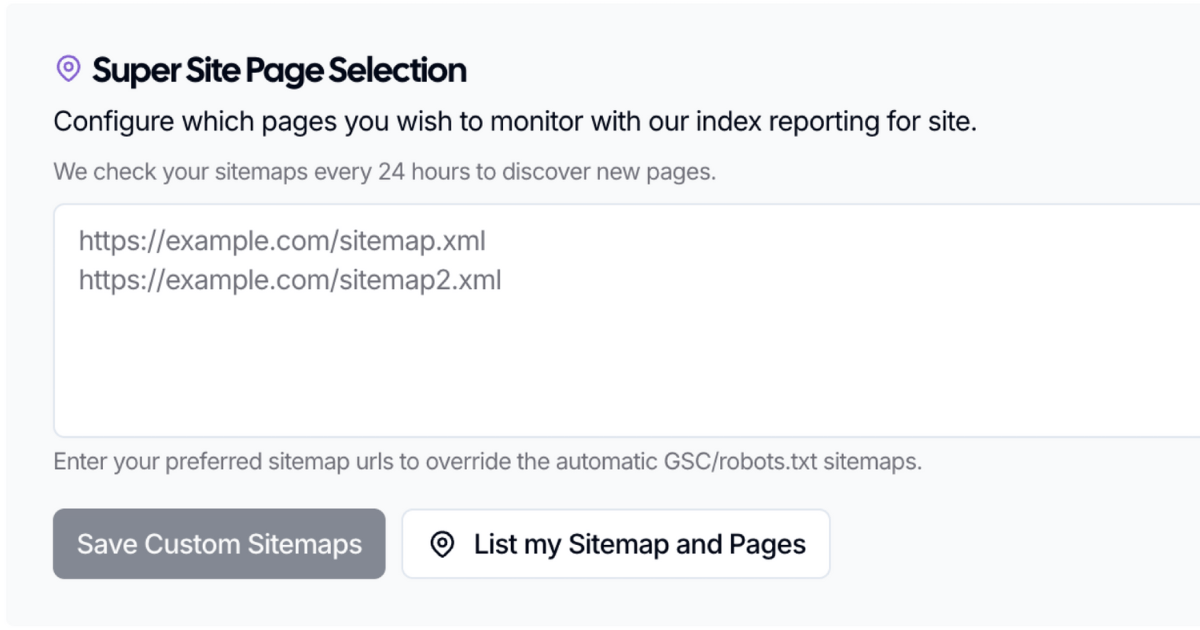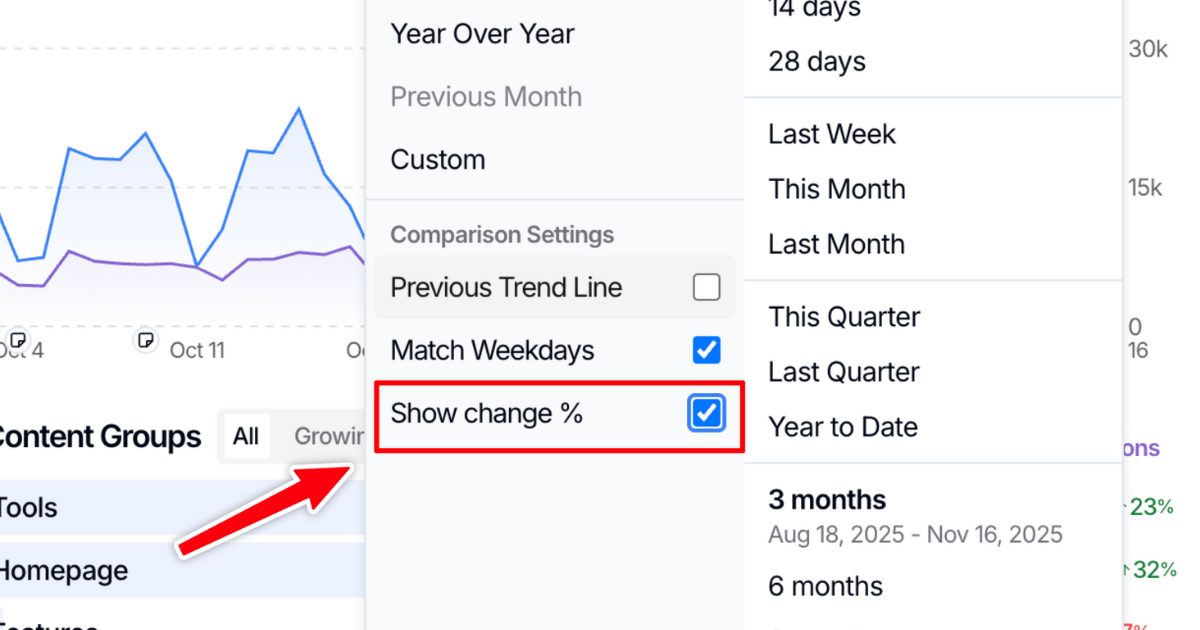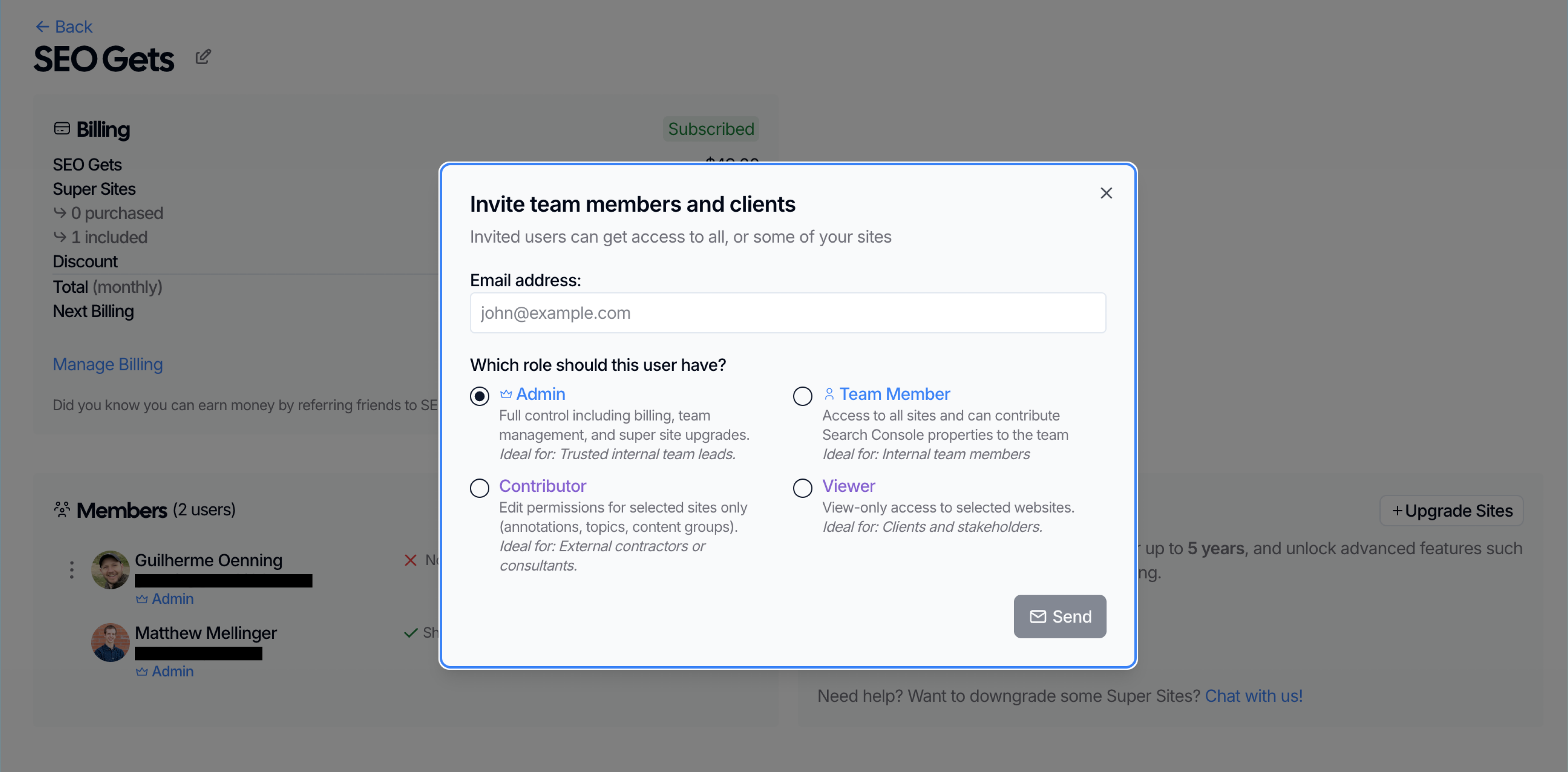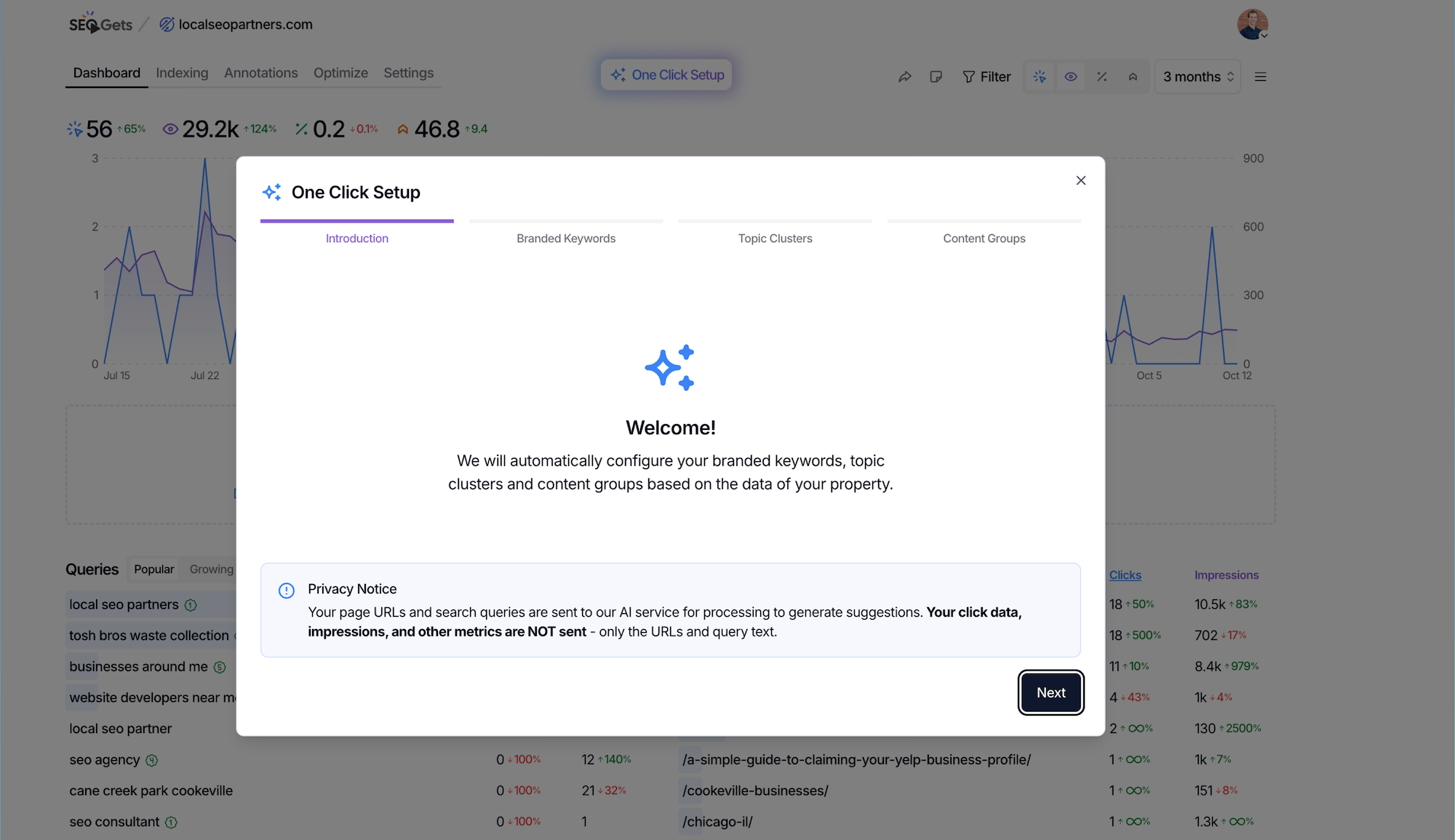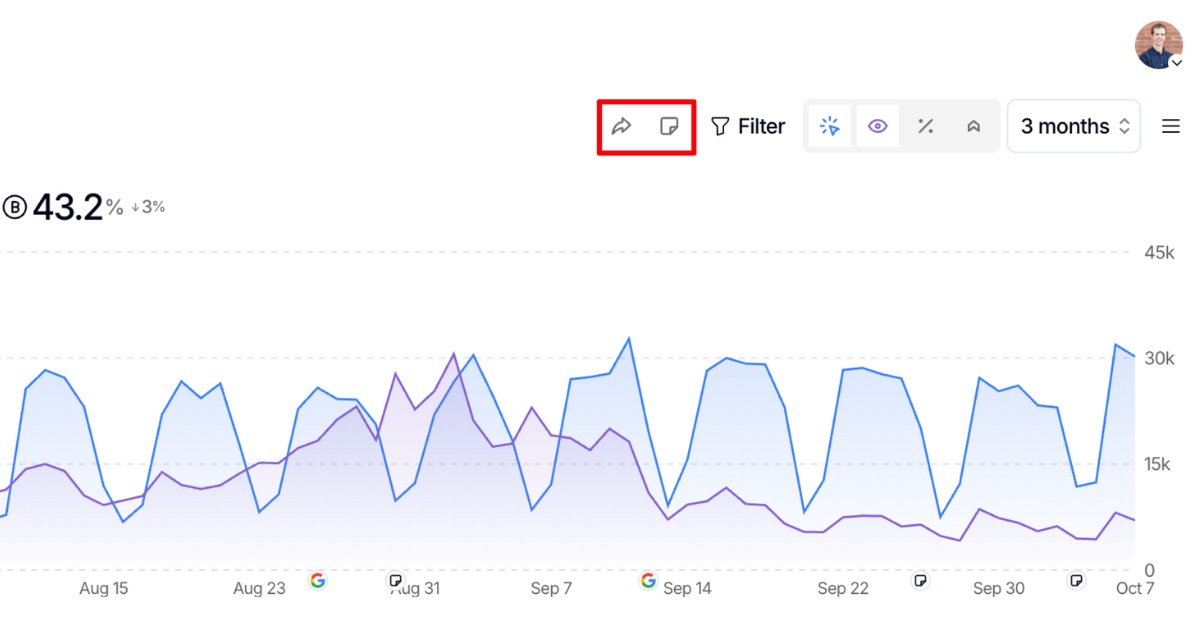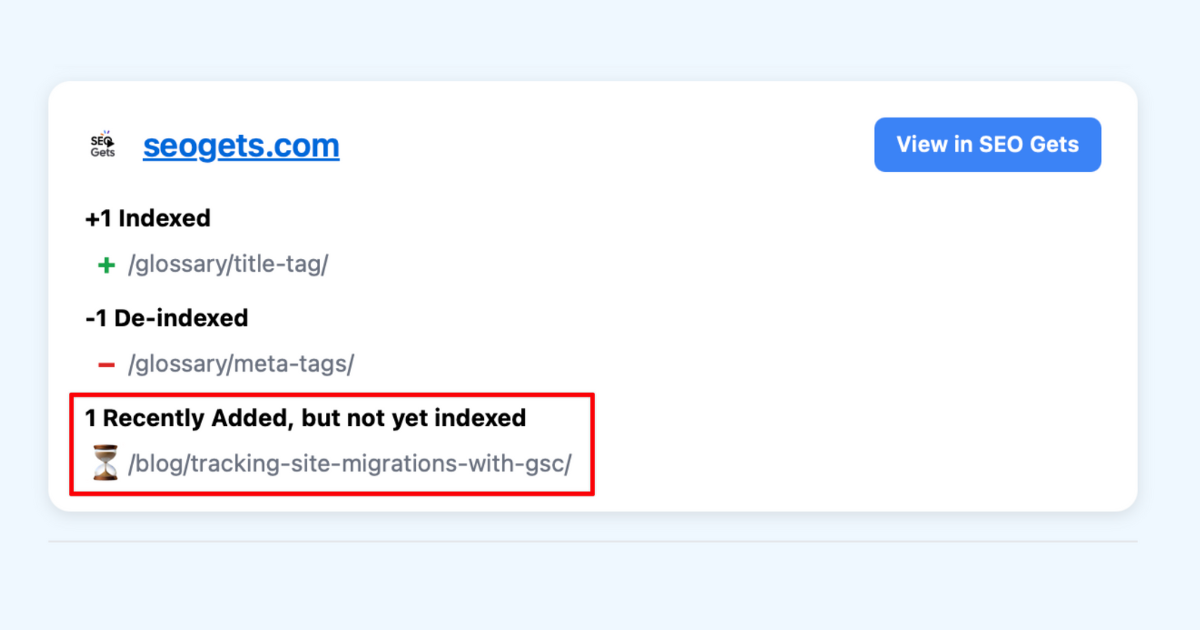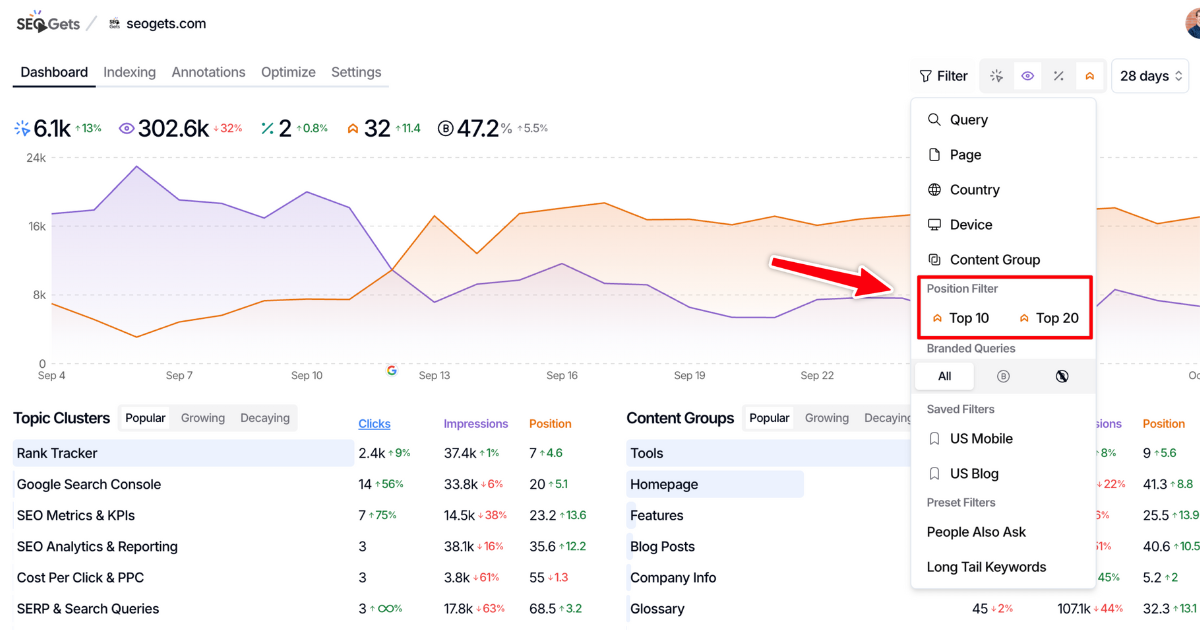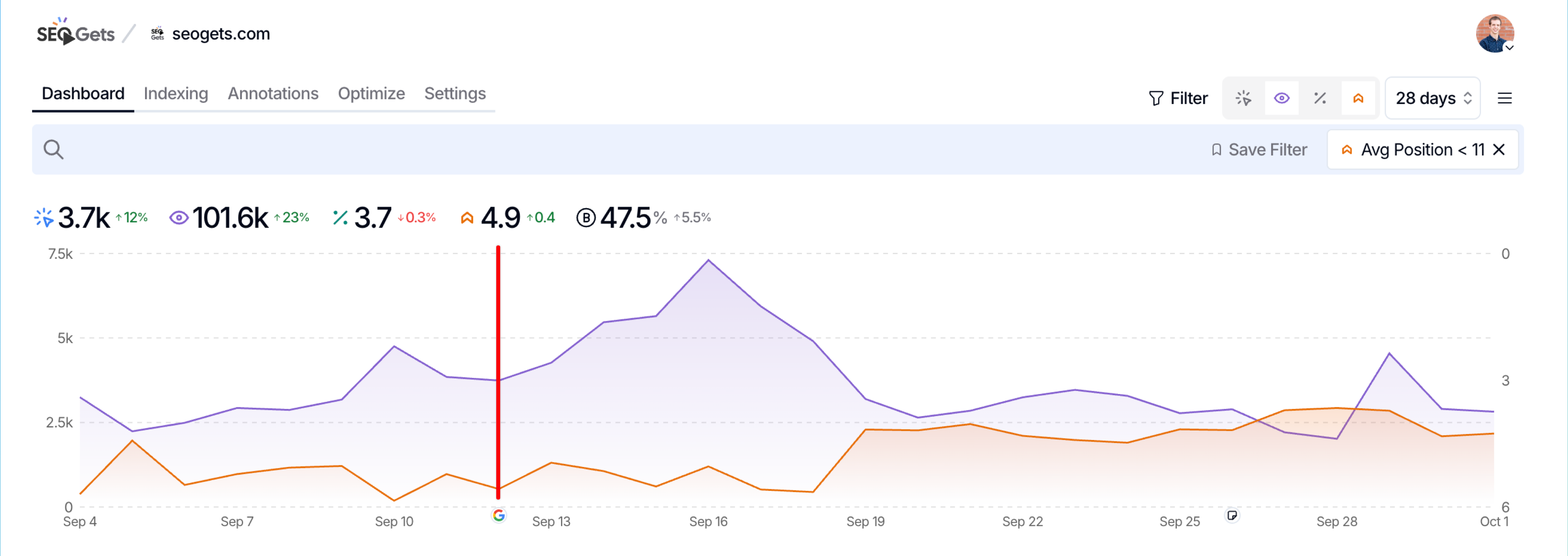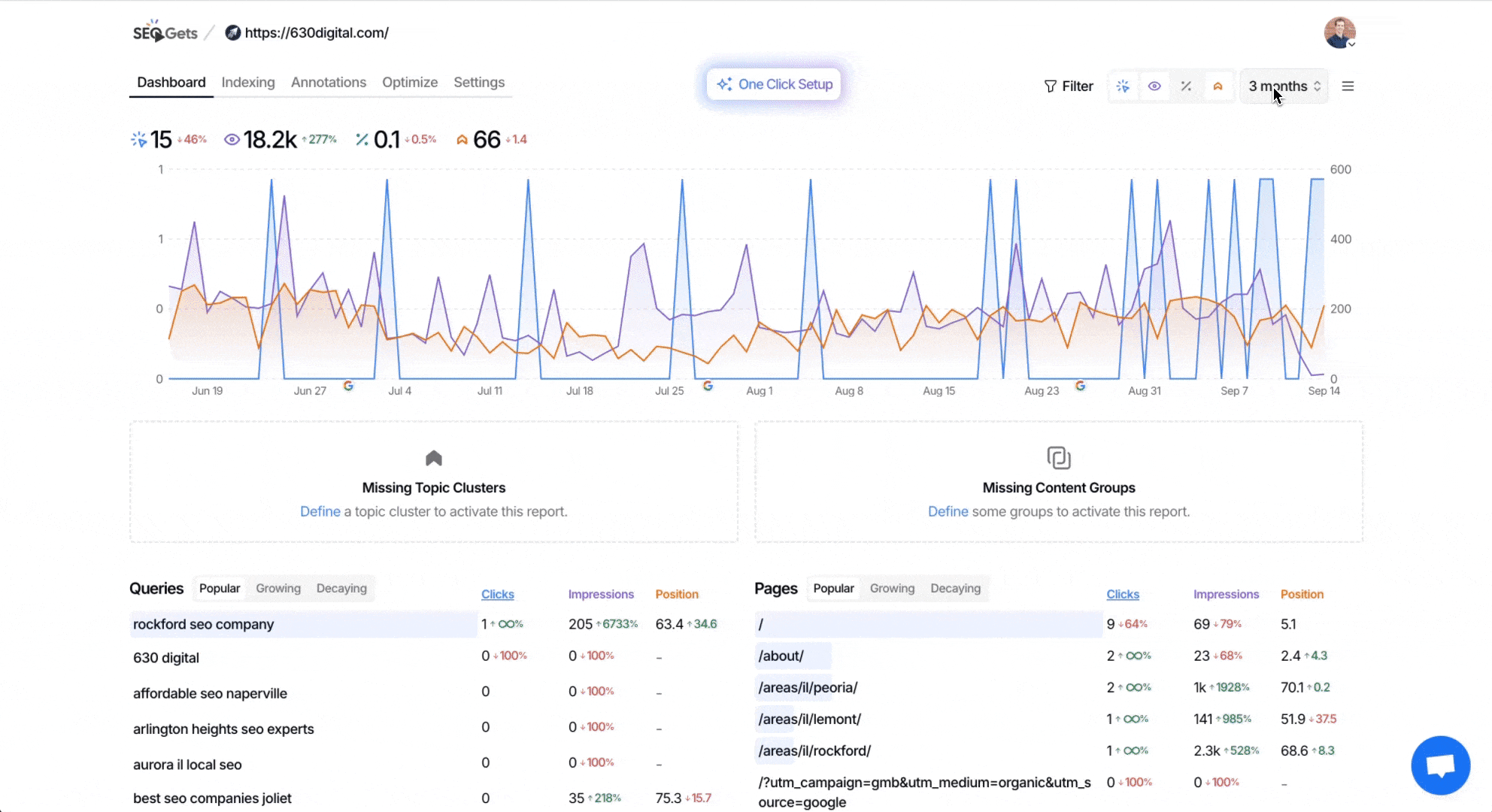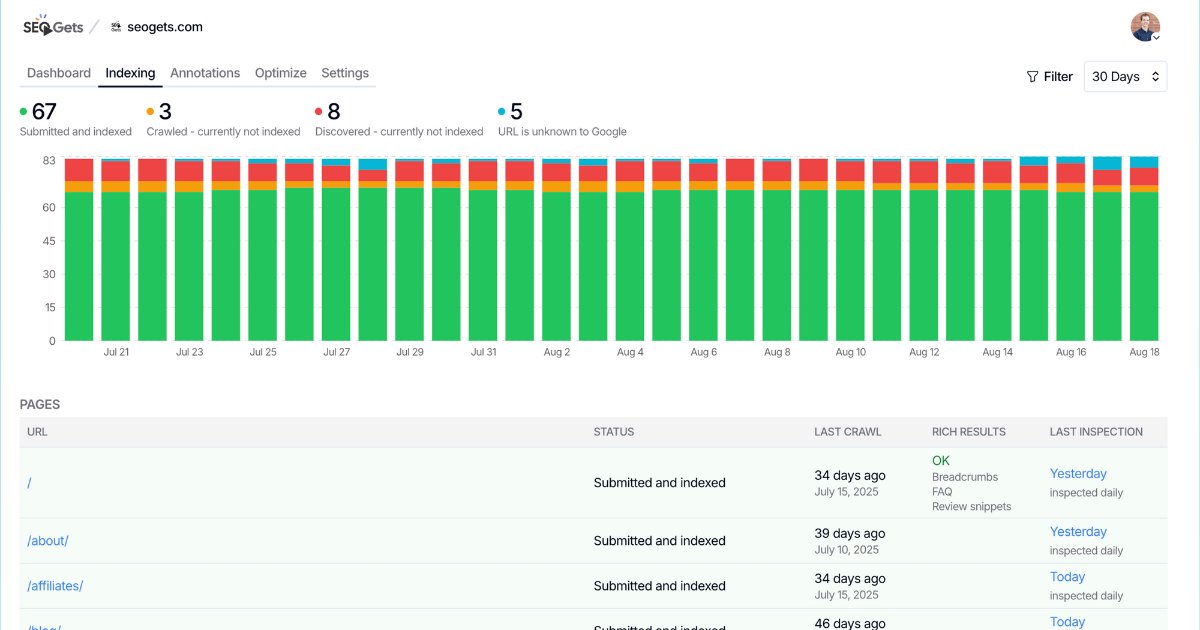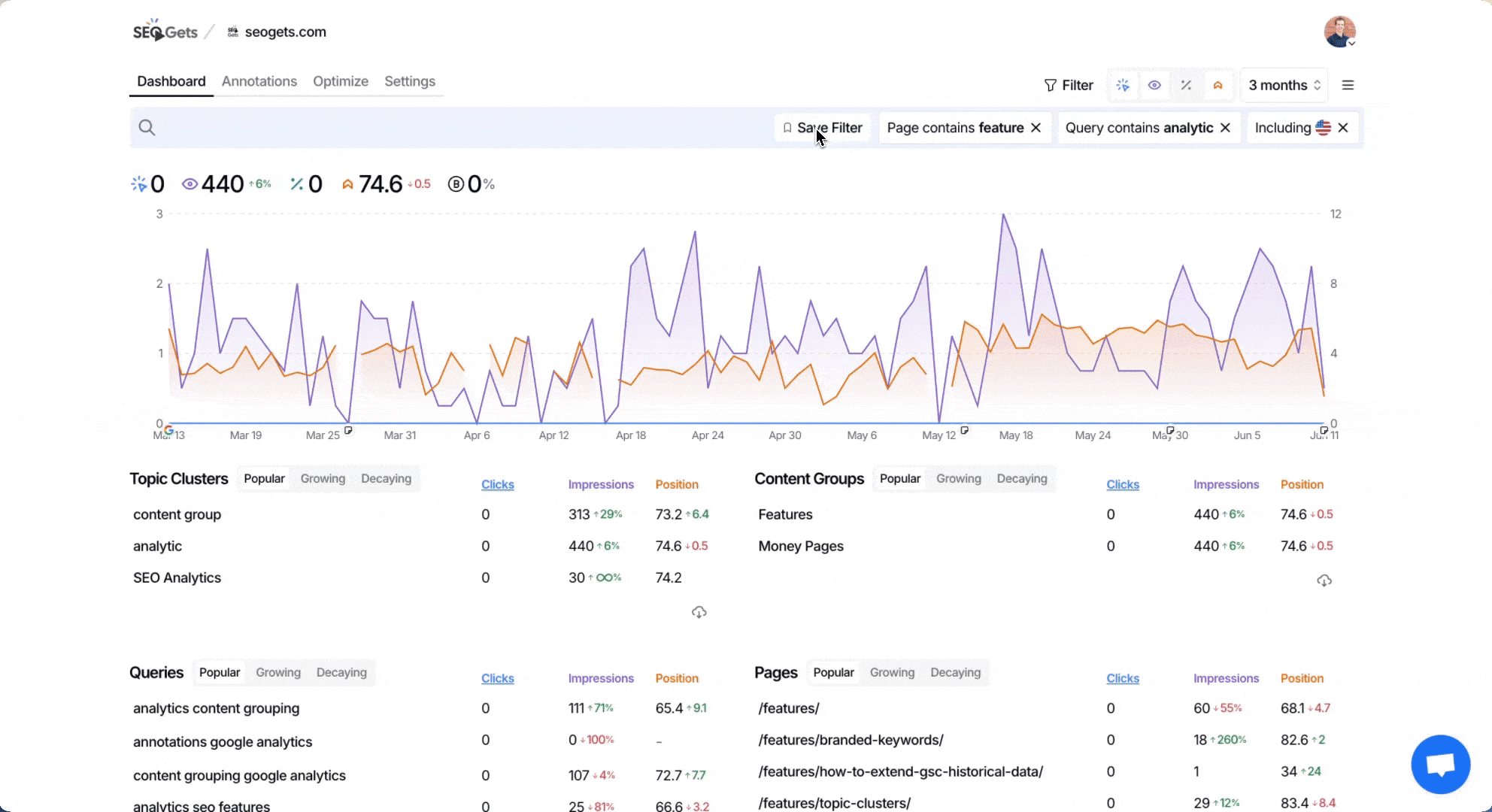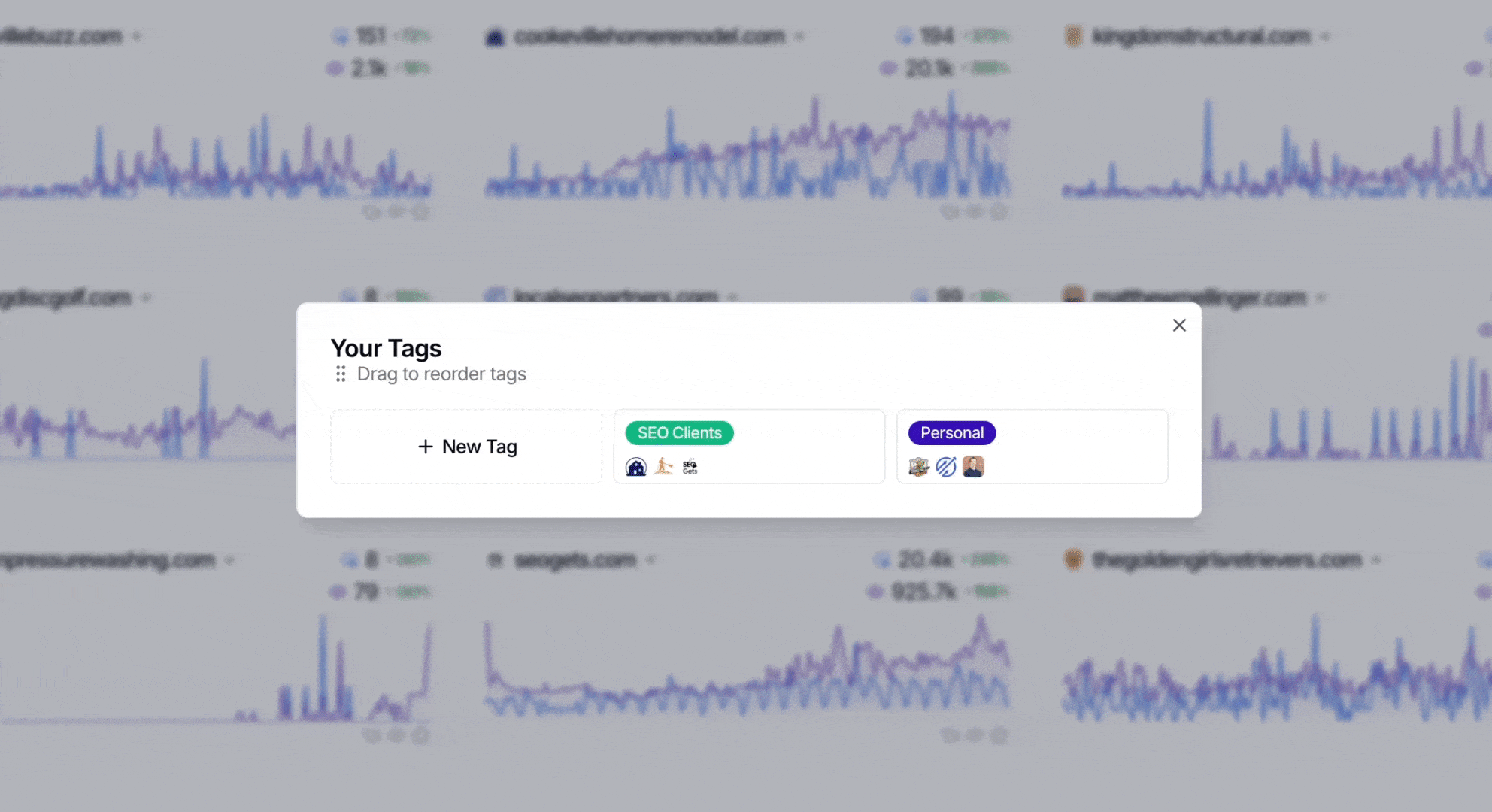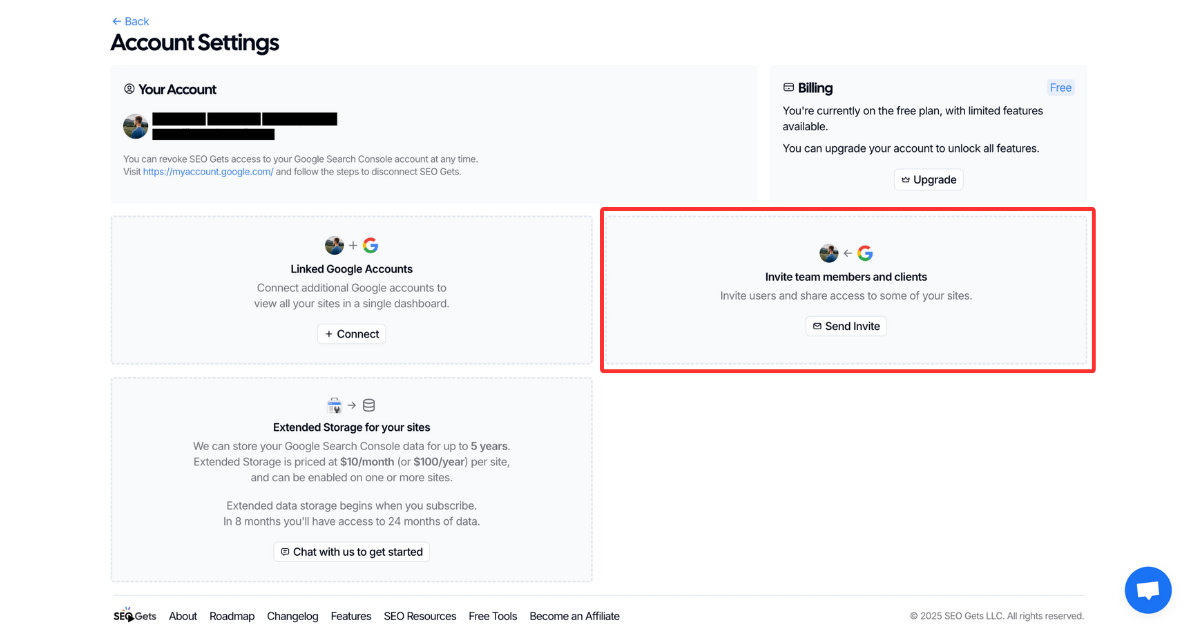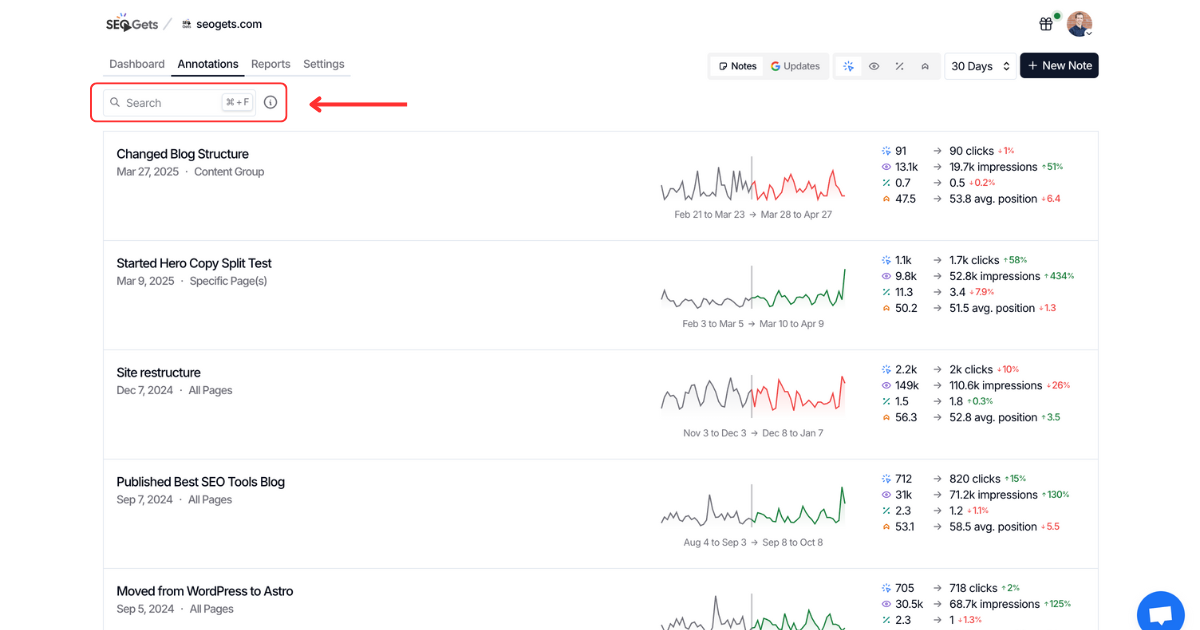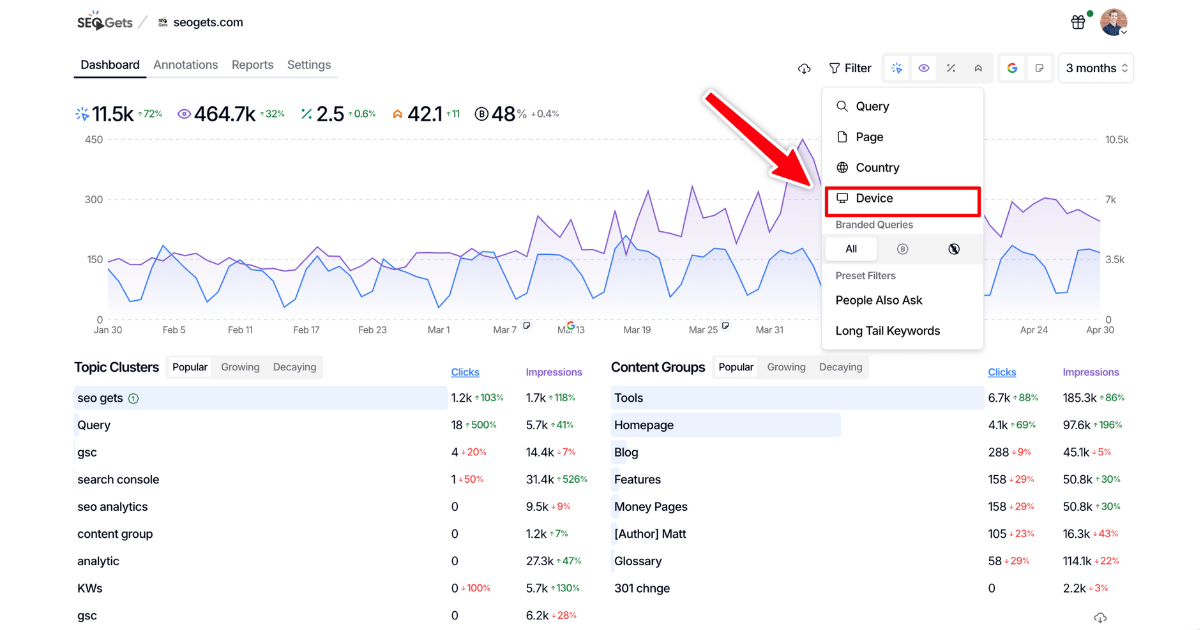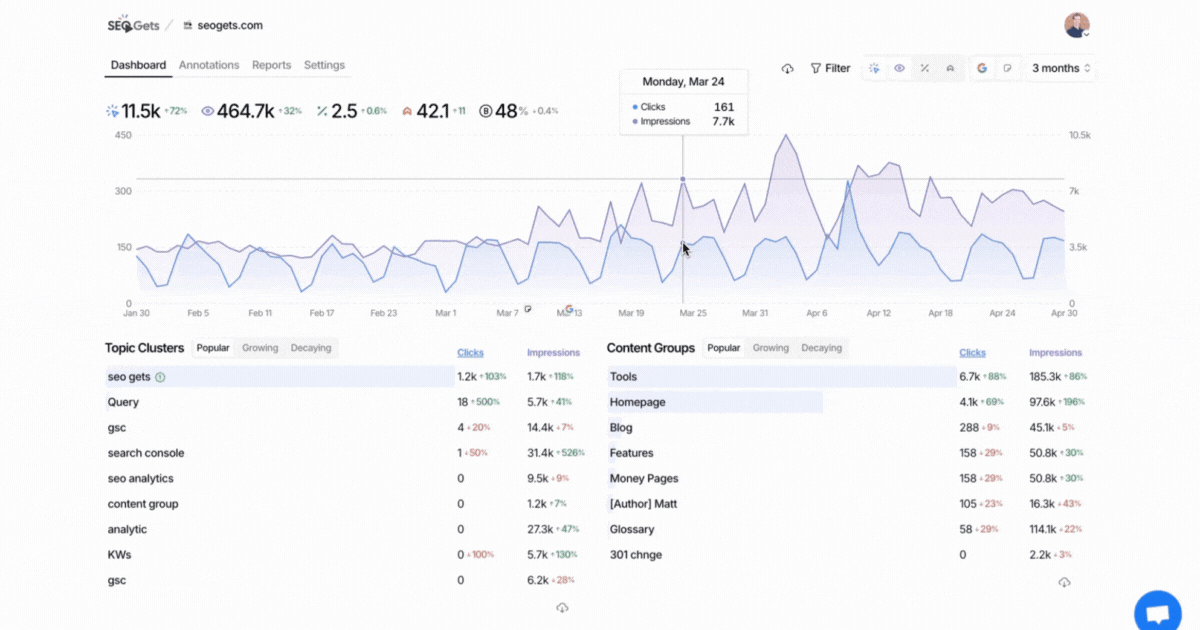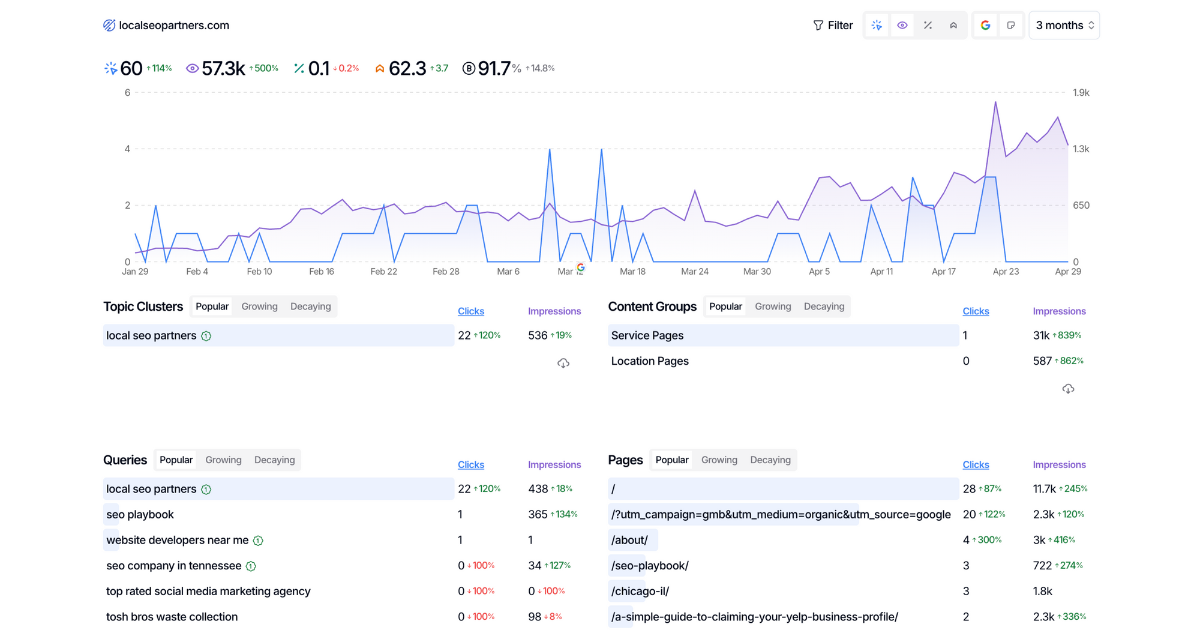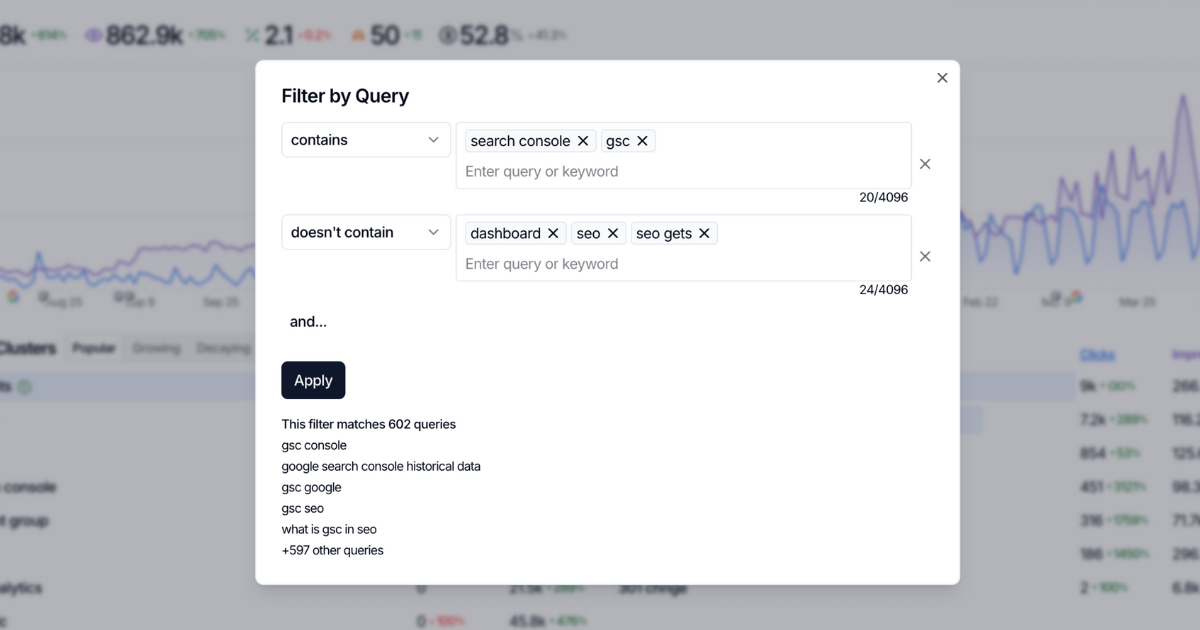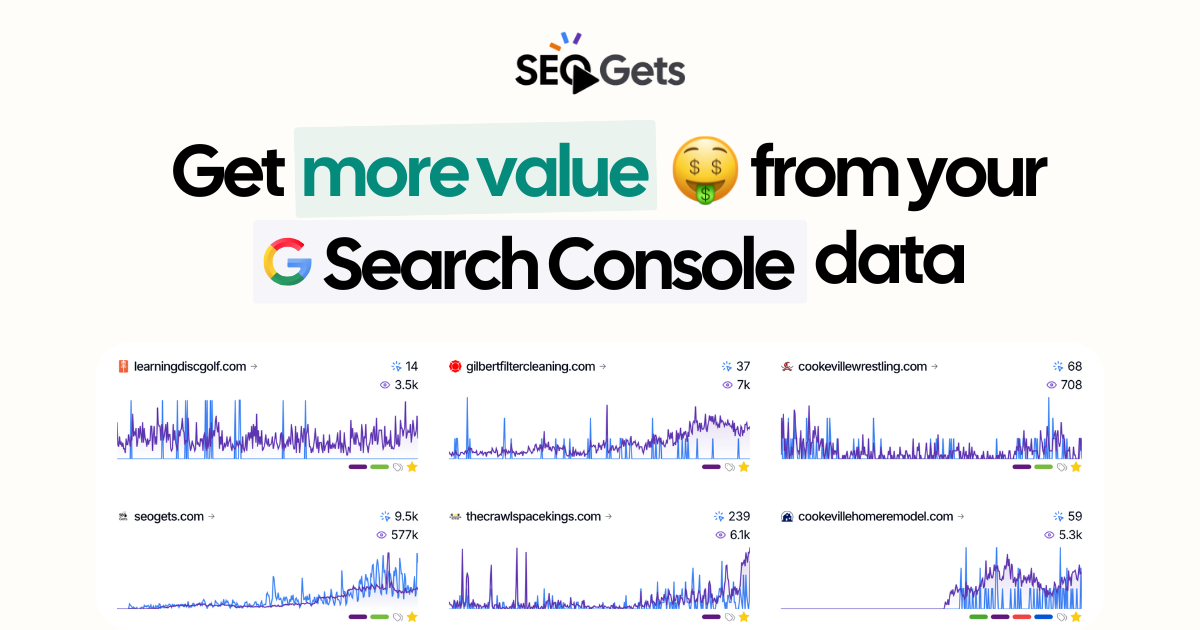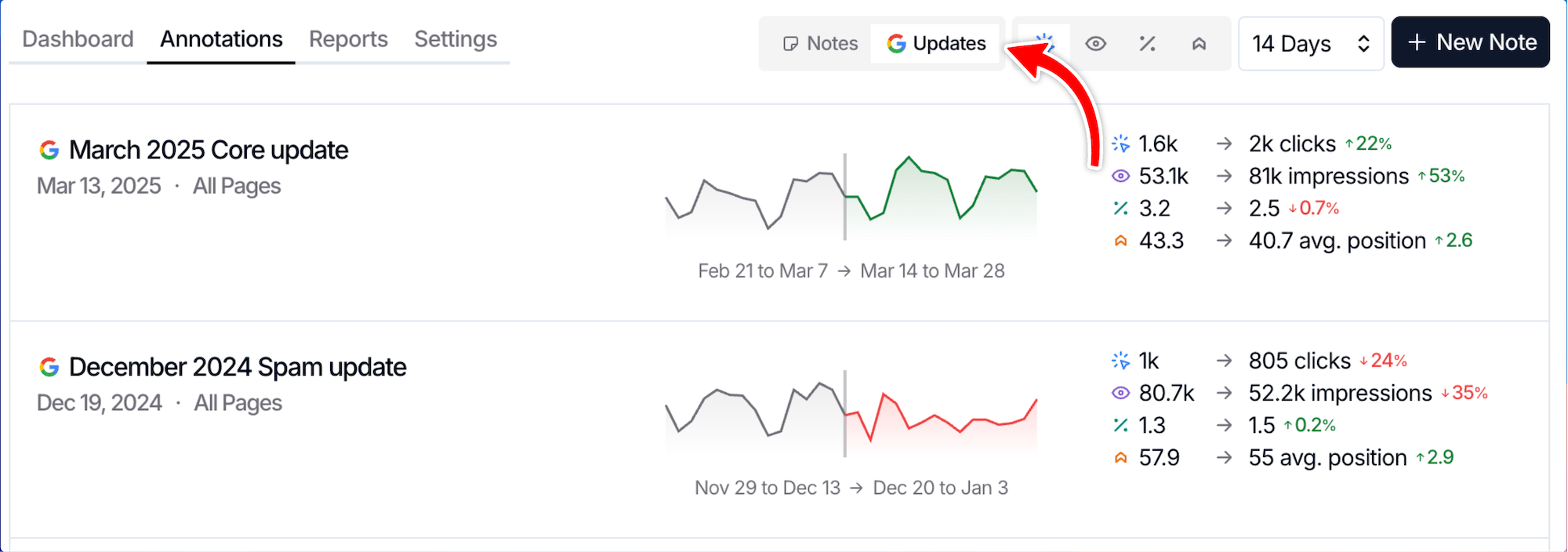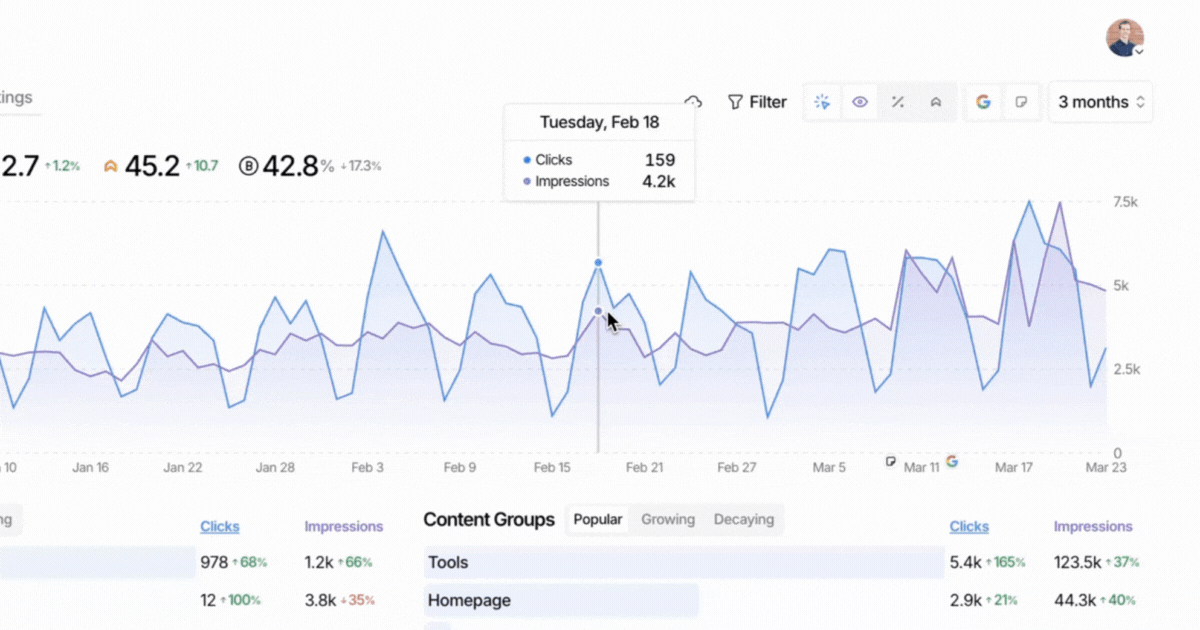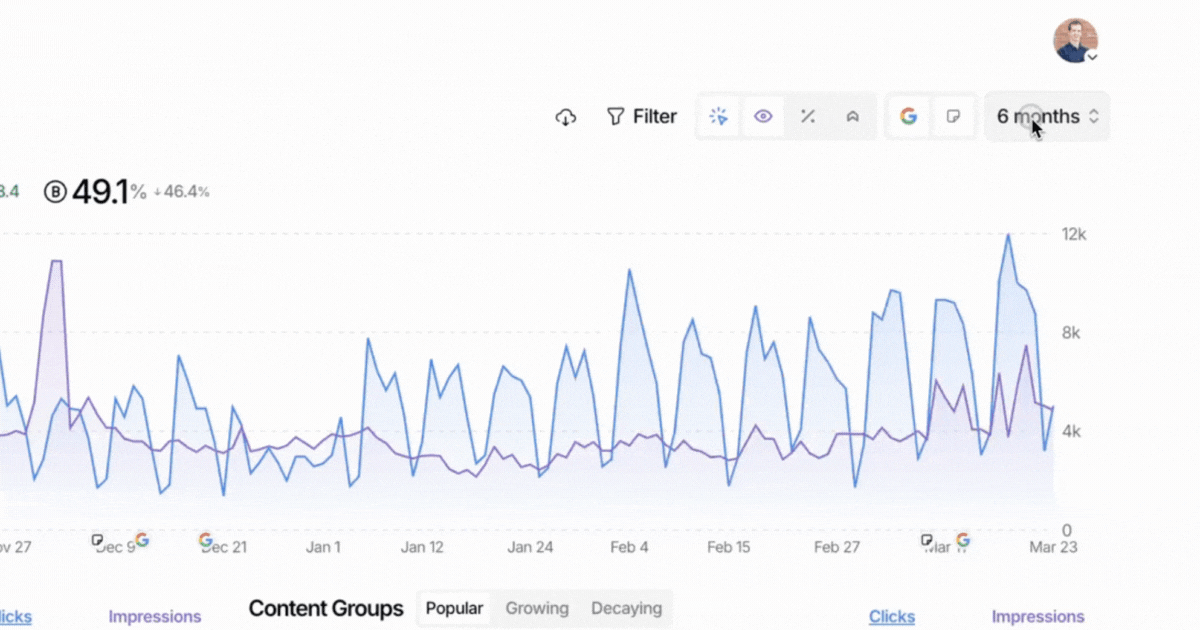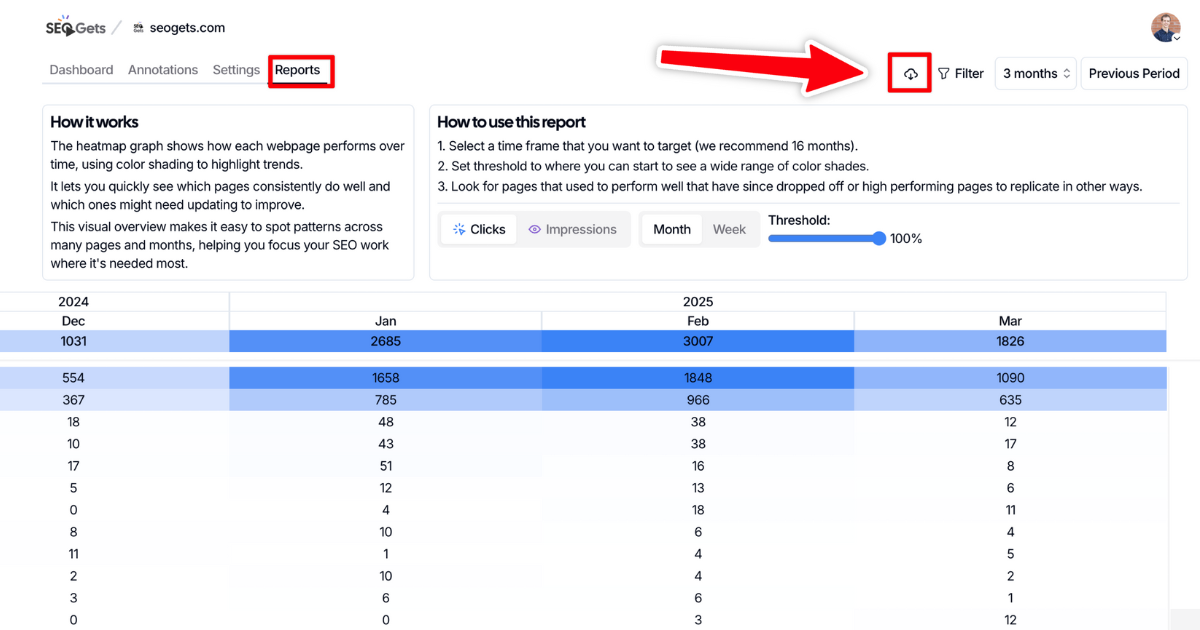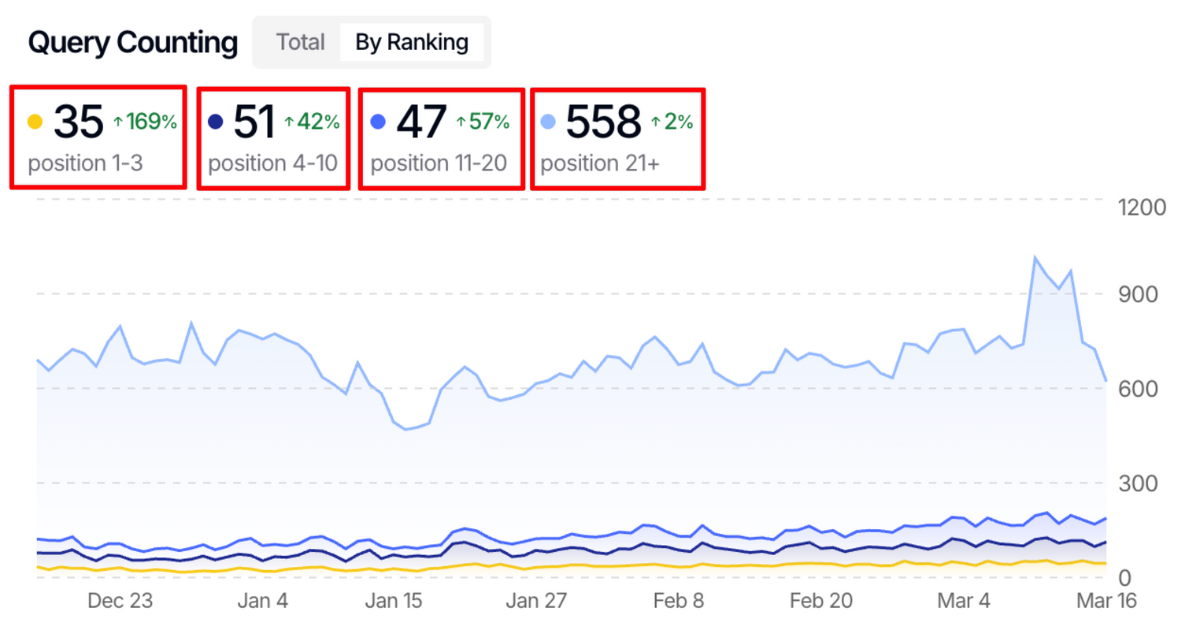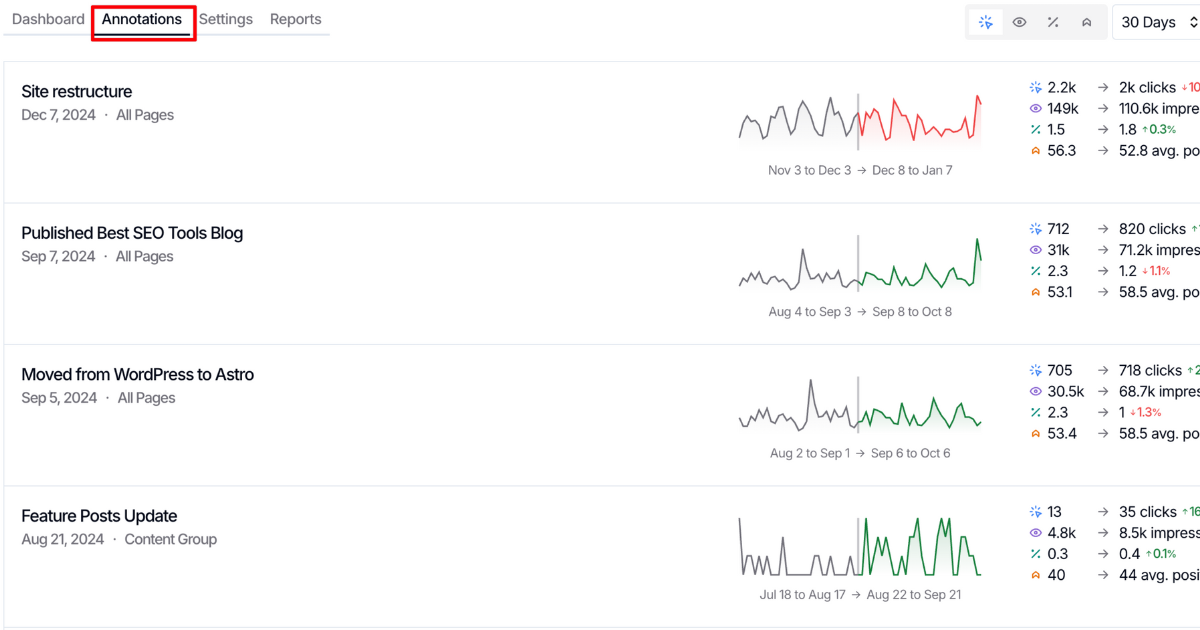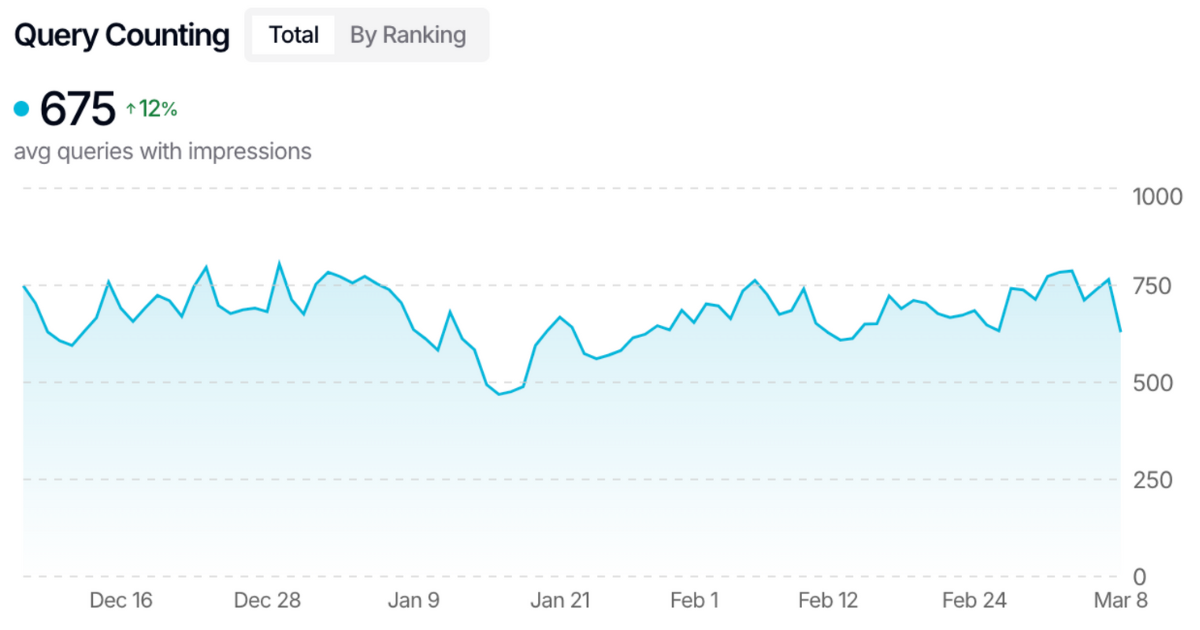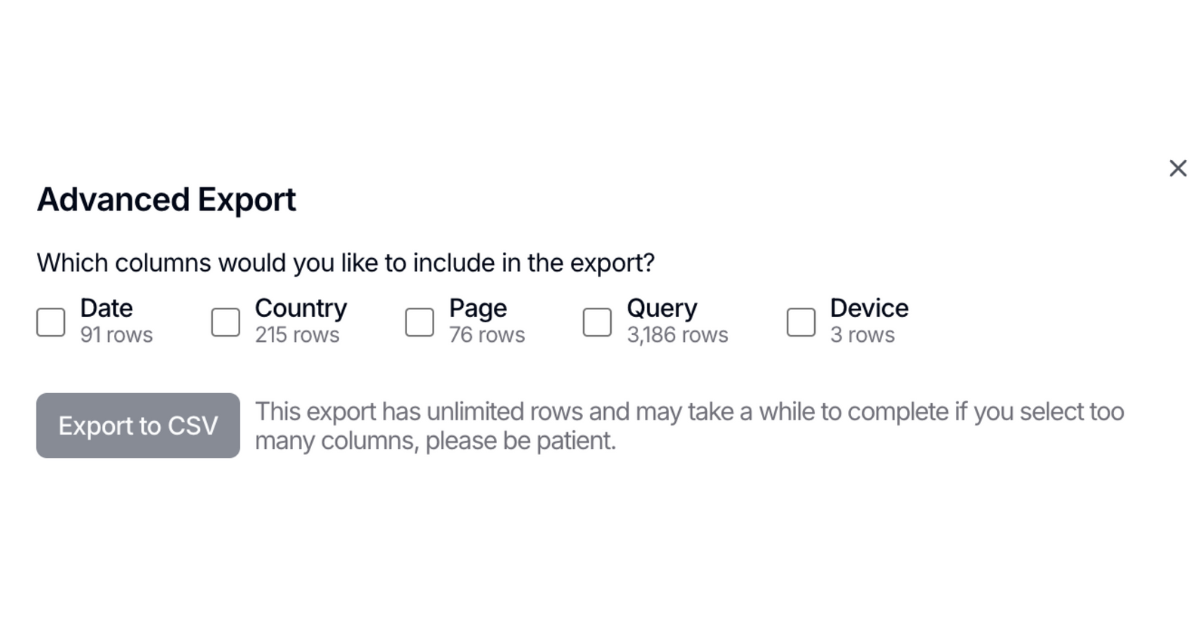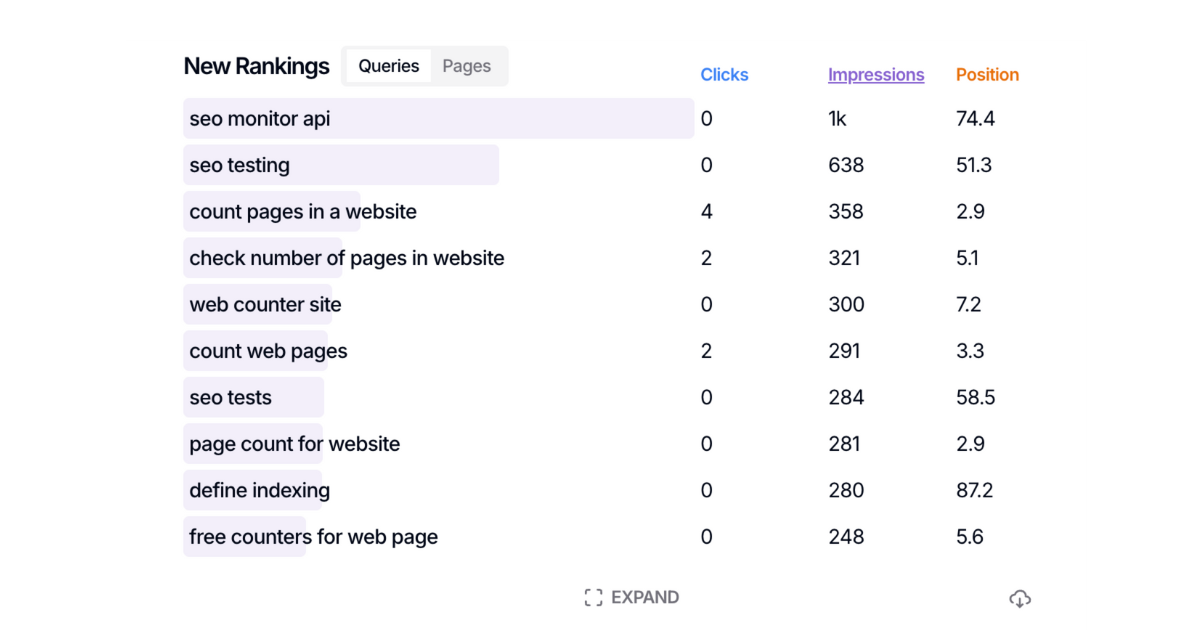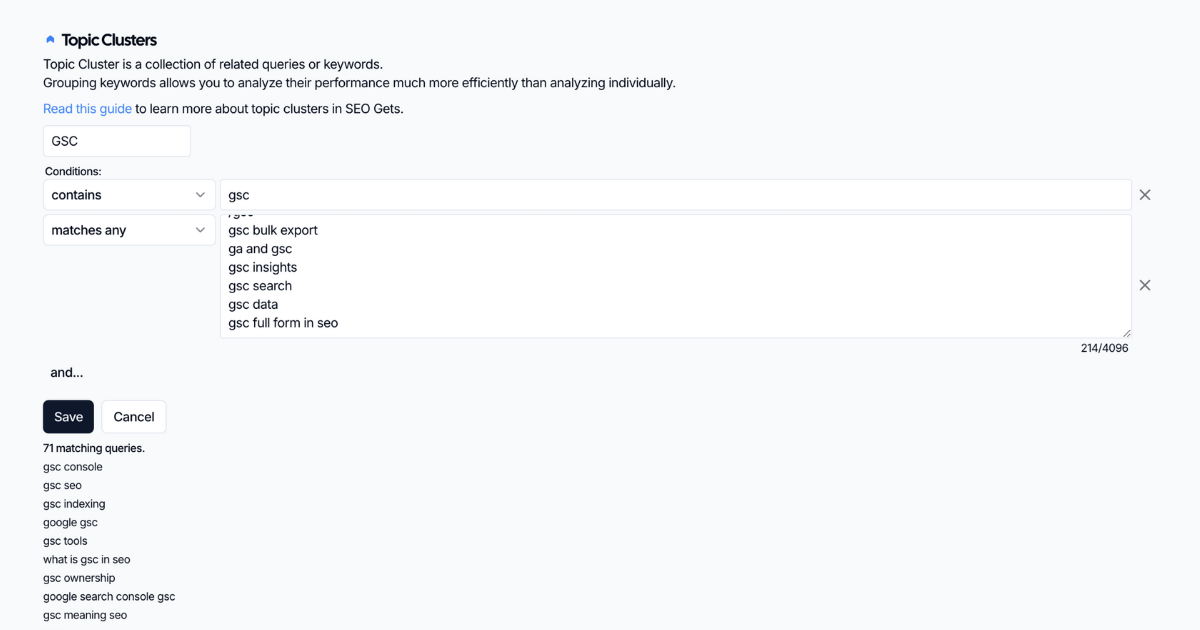Super sites now have a limit of 5,000 pages for index reporting per super site.
We’re making this change for two key reasons that will benefit most of our users:
- Faster index reporting – Users with tens of thousands of pages were experiencing inspection cycles lasting weeks or even months (which means a majority of the data wasn’t even useful at that point). Shorter cycles mean you’ll get your indexing data more quickly and reliably.
- Foundation for automatic content tracking – This enables us to build one of our most requested features: automatic content change detection across your selected pages, eliminating the need for manual annotations while still keeping pricing affordable.
A new settings UI is available that allows you to select exactly which sitemaps and pages you want to track. This is available in the property settings below the shared link section.
If you need to track more than 5,000 pages, you can add additional super sites for individual subfolders or subdomains, each with its own 5k limit.
Important: This change only affects index reporting. Extended storage remains unlimited and unaffected.
